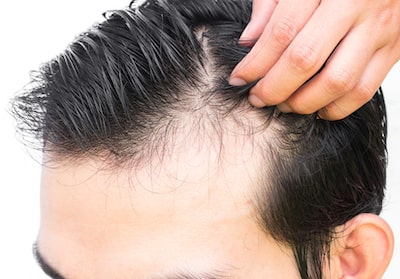Follicular Unit Extraction, AKA FUE hair transplant, is a hair restoration procedure performed by taking hair follicles from your body and transferring the follicles to the areas of the scalp where the hair is thinner or absent. FUE has become more popular in comparison to Follicular Unit Transplantation (FUT) due to the creation of a scar where the hair follicles are removed during DUT. Surgeons will extract individual hair follicles during FUE and move them while eliminating any signs of follicle extraction. The best candidate for a FUE hair transplant is someone that is balding, or has thinning hair, but still has enough donor hair elsewhere on the scalp or body to use for a hair transplant. There is a chance that you may not be eligible for a FUE hair transplant if there isn’t enough healthy or thick hair present to transplant to the thinning or balding area of the scalp.
FUE Hair Transplant Cost

The cost of a FUE hair transplant depends on a few factors like how much hair is extracted and transplanted, how many surgeons are available in your area to do the procedure, the experience level of the surgeon performing the FUE hair transplant and any additional costs charged by the medical facility. You will have to pay for a FUE hair transplant out of pocket because most health insurance plans do not cover cosmetic procedures that are not deemed to be medically necessary. You will also have to pay for prescription medications for pain that may result from this surgery. Please factor in the time you will need to take off work for recovery when considering the cost. During the recovery time, you will need to spend three or four days resting at home. This tidbit of info is important because most companies don’t cover hair transplants under medical leave policies.
FUE Hair Transplant – How it is Performed
Before you even have your FUE procedure, your surgeon will determine the best place on your body to remove hair follicles to transplant into the scalp. In general, the surgeon will likely use hair follicles from the donor area of the scalp which is located on the back and sides of the scalp. The hair in the donor area of the scalp is resistant to balding so it is an ideal area to remove hair follicles.
Using a micro-punch tool, the surgeon will remove individual hair follicles from the designated area of the body. The hair follicles will then be inserted into areas of the scalp where tiny incisions have been made so the hair follicles will be able to be placed in the balding area of the scalp.
FUE Hair Transplant Recovery
An FUE procedure is generally considered to be safe with only some minor possible side effects such as bruising and swelling, as well some pain or a feeling of tightness, in the transplanted area of the scalp.
The recovery process from an FUE procedure might also see you being subjected to some discomfort for a few days. It is important that you wash your hair properly (as shown by your surgeon and his medical team) so you do not dislodge the grafts in the days following the surgery.
 Do not wear hats, beanies or other clothing that goes over your head until your doctor approves this and says it is okay to start pulling clothing over your head or wearing a hat. Avoid doing any strenuous physical activities for about a week (or more) depending on when you doctor clears you to start exercising again. Please note that some hairs may fall out during the healing process and this is a normal occurrence.
Do not wear hats, beanies or other clothing that goes over your head until your doctor approves this and says it is okay to start pulling clothing over your head or wearing a hat. Avoid doing any strenuous physical activities for about a week (or more) depending on when you doctor clears you to start exercising again. Please note that some hairs may fall out during the healing process and this is a normal occurrence.
You will start to notice a difference in the growth and appearance of your hair after three to four months. Depending on the health of your transplanted hair, your hair may not grow back as thick as expected but your doctor will give you realistic results that you can expect to see after the surgery.
FUE Hair Transplant Consultation Appointment
The first step in the hair transplant process is scheduling a consultation appointment with a board-certified surgeon that is experienced in proving natural results that will last a lifetime.
Not every potential hair transplant patient will be an ideal candidate for a hair restoration procedure. You might not have enough donor hair on your scalp or body to transplant to the scalp. In addition, the donor hair that you do have available on the body might not be high-quality enough to move to the balding areas of the scalp.
The surgeon will examine your scalp during the consultation appointment and determine if you are healthy enough to have a procedure. In addition, the doctor will answer any questions you have about the hair transplant process and address any concerns you have about the procedure. Once all of your questions are answered, you can make an informed decision about having a FUE hair transplant surgery.
– JM